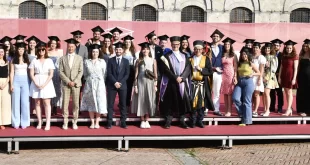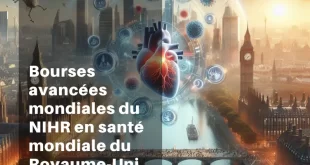Offer description
We are looking for higly motivated candidates to apply for a PhD position (DC1) within EU Marie Skłodowska-Curie Doctoral Network (MSCA DN) GAP («image-Guided computational and experimental Analysis of fractured Patients»).
General information
Politecnico di Milano is seeking a PhD candidate to be offered scholarship for a position within the framework EU Marie Skłodowska-Curie Doctoral Network (MSCA DN) GAP . The candidate will be enrolled within the Doctoral Programme in Mechanical Engineering – Department of Mechanical Engineering.
The mission of the Department of Mechanical Engineering is to promote and develop culture, research and innovation in its sectors of reference, but also in new fields deemed to become more and more important in society and in our present background. For example, it deals with sustainability, clean energy and power technologies, bio and smart materials. Please look at www.mecc.polimi.it for more details on the type of activities we undertake.
General overview of GAP MSCA project
Age-related bone fractures are a major health concern, resulting worldwide in high economic and psycho-social burden, morbidity and increasing mortality. With aging and in presence of bone pathologies, human bone becomes more brittle and prone to damage.
A disruptive clinical hypothesis considers Covid-19 virus as an additional contributing factor in bone deterioration. At the macro-scale, the identification of fragility is assured by the clinical practice: common clinical tools, however, are able to predict only 70% of fractures. For this reason, a deep investigation of the bone micro-architecture would be a fundamental hint for the comprehension of damage mechanisms, improving the reliability of fracture risk indicators and performing more accurate diagnosis of bone pathologies. This knowledge level goes beyond the current state of the art and this is where GAP comes into play, providing attractive, multi-disciplinary and versatile training strategies for multi-scale comprehension, detection and patient-specific treatments of bone fractures. The over-arching aim of GAP proposal is to educate young and talented scientists towards a combined high-level experimental and numerical approach for the early-stage accurate, precise detection and mini-invasive treatments of bone fractures, shedding some light on bone micro-scale alterations due to pathologies. The inter-disciplinary findings, that exploit cutting-edge multi-scale imaging facilities and advanced artificial intelligent-based strategies, will be a crucial aspect in the training of skilled researchers and will enable Europe to overcome the silent paralysis of its healthcare system.
Specific project for Doctoral Candidate 5 (DC5): “From the synchrotron images to multi-scale numerical models ”
The primary goal of this research involves analyzing morphological and structural features at the meso-scale to understand their contribution to bone fractures. This entails categorization and comprehension of elements such as trabecular orientation, thickness, and porosity in relation to fractures. Following that, an in-depth exploration of multi-scale mechanisms of bone damage is underway using advanced numerical models. This involves simulating and understanding damage progression from micro-level microcracks to meso-level fractures. The third objective centers on the development of reliable numerical models at both the meso and micro scales, accurately representing how bones accumulate and propagate damage under varied conditions. Lastly, validation of these numerical models is planned through comparison with experimental results, ensuring accuracy and effectiveness in mimicking real-world bone behavior. This validation will guide future studies in bone fracture analysis and treatment.
Expected results
Planned secondment(s):
1) Prof. D. Taylor, TCD (Trinity College Dublin): development of different numerical models and comparison with the corresponding modelling approaches; obtainment of optimal models for predicting damage evolution.
2) Prof. G. Banfi, IOG (IRCCS Ospedale Galeazzi-Sant’Ambrogio): study and classification of the different structural and morphological fracture that lead fracture in bones.
Requirements
- Research Field
- Engineering » Biomedical engineering
- Education Level
- Master Degree or equivalent
- Research Field
- Engineering » Materials engineering
- Education Level
- Master Degree or equivalent
- Research Field
- Engineering » Computer engineering
- Education Level
- Master Degree or equivalent
We welcome applications from Doctoral Researcher candidates fulfilling the following criteria:
- Can be of any nationality but must not have resided or carried out their main activity (work, studies, etc.) in the country of the recruiting organization for more than 12 months in the 36 months immediately before their recruitment date. Time spent as part of a procedure for obtaining refugee status under the Geneva Convention (1951 Refugee Convention and the1967 Protocol), compulsory national service, and/or short stays such as holidays are not considered.
- Must meet the entry requirements for PhD enrollment. They must hold a 2nd Level Master Degree (120 ECTS + 180 ECTS in a bachelor degree) or a Single Cycle Degree (minimum 300 ECTS), or a comparable university degree (Second Cycle qualification) in biomedical engineering, mechanical engineering, computer engineering or related fields.
- Must not have a doctoral degree at the date of their recruitment. Researchers who have successfully defended their doctoral thesis but who have not yet formally been awarded the doctoral degree will not be considered eligible.
- Are required to be proficient in the English language (if not native speaker). English proficiency of short-listed applicants shall be assessed during the selection interview.
- Must be available to enroll full-time in the PhD program at Politecnico di Milano.
- Are aware of and adhere to the principles set out in the Commission Recommendation on the European Charter for Researchers.
Candidates should have documented background in biomedical, material, computer engineering or related fields.
- Languages
- ENGLISH
- Level
- Good
Additional Information
- You will be enrolled in a 3-year full-time PhD program
- You will carry out cutting edge research in the area of bone fractures and get innovative multidisciplinary and multisectoral training by experts and experienced supervisors from the clinical and the academic world.
- You will publish your research findings and participate to national and international conferences.
- You will travel a lot, including stays abroad for secondments at our academic partner Trinity College (TCD) in Dublin and at the clinical orthopaedic hospital (IOG) in Milan.
- You will work in an international team and be part of a network of 11 PhD students.
- You will participate in a structured training programme merging soft skill courses, targeted workshops, social events and networking.
The application should be performed through an online application platform (https://forms.gle/qfd9qMYNrryP1UPQ6) to be found on the GAP website (https://www.gapmscaproject.com/):
Applications must be in English. Each applicant may apply to a maximum of three individual research projects.
Candidates must apply through the network website in which they will be able to upload the following documents:
- a CV (including publications, if any),
- a motivation letter,
- Copies of degree and academic transcripts (with grades and rankings), for both the Bachelor’s and Master’s degrees. Academic records not written in English should be accompanied by a translation into English (it can be either an official translation or self-translation). If the candidate has not been awarded the qualifying degree yet, he/she should provide a document proving the expected date of award.
- Summary of Master’s thesis (approx. 1 page)
- name, e-mail address, affiliation and role of at least one referees
- Scanned copy of a valid national ID, passport, or equivalent
- 1 Reference letters
- English certificate (if not native speakers)
Optional documents:
- Publications: maximum 3 journal papers or conference proceedings, no theses or under review manuscripts
- Reference letter/s (for a maximum of 3)
The documents must be uploaded as indicated in the online form. This is a compulsory procedure, any other means/format for applying will not be accepted.
Eligible applications will be ranked on the basis of academic merit, research skills, motivation letter, and recommendation by referees.
The optimal candidates for each position will be invited to interviews (taking place mid of December) where the final candidate will be selected (Communication of the final results: end of December). The enrolment on our Doctoral school will take place from February 2024.
Applicants with a positive evaluation but not selected will be included on a reserve list to cover possible future positions and might be contacted at a later stage.
The selected candidate will be appointed a temporary contract for 36 months; the gross salary will be in line with the funding schemes of MSCA action. In detail, the annual gross contribution corresponds to € 46939.20 (before employee’s and employer’s taxes and contributions).
In case of eligibility, an additional annual gross contribution of € 5940 for family allowance is considered.
Características del Puesto
| Categoría de Puesto | Doctorat |
 medjouel.com Estudio sin parar
medjouel.com Estudio sin parar



